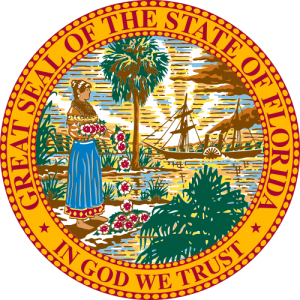 Florida Population 2013
Florida Population 2013
Based on estimates and the studies by the United States Census Bureau, the population of Florida in 2013 is estimated to be 19,317,568, which is the 4th largest population in the United States. This growth displayed a 2.7% increase from the last census taken in 2010. Based on the population and based on the area of the state, the population density of the state is about 353.4 people per square mile, ranked the 8th largest population density in the United States.
Florida Population Projections
Based on the historical and current trends of the state, the population is expected to reach about 19.751 million people by the year 2015. This population would be a 2.2% increase from the current population of Florida. Then, by the year 2020, the population is expected to continue that trend. It is expected to reach 21.141 million people. This would be a 9.4% increase from the current population. Continuing a fairly large increase, the population is expected to reach 22.434 million people by the year 2025, recording a population increase of 16.1% from the current population. Then, by the year 2030, the total population is expected to be about 23.601 million people, which is a 22.2% increase from the current population. The population is expected to then grow about one million people by the year 2035 to 24.64 million people, which is a 27.5% increase from the current population. Lastly, the population is expected to top 25 million to 25.583 million people, which shows a population growth of 32.4% over the next 27 years.
Florida Land Mass
Florida measures from its most distant points to be about 500 miles long and 160 miles wide. The state also has an approximate area of 65,758 square miles, making it the 22nd largest state in the country. Florida occupies about 11,761 square miles of water, which makes it the third wettest state behind Michigan and Alaska. Compared to this water area, Florida takes up 53,997 square miles of land. Britton Hill has the highest elevation point in the entire state of Florida. It reaches an approximate 345 feet above sea level. The lowest point in the state is at the Gulf of Mexico and the Atlantic Ocean, which reaches sea level. The geographic center of Florida is located in Hernando County, 12 miles north northwest of Brooksville. Only two states border the state of Florida: Alabama and Georgia. However, the Gulf of Mexico borders the state on the west and the Atlantic Ocean borders the state on the east and the south.
Florida is made up of three distinct geographic land areas: the Atlantic Coastal Plain, the East Gulf Coastal Plain, and the Florida Uplands. The Atlantic Coastal Plain lies along the eastern portion of the state. The Big Cypress Swamp and the Florida Everglades are a part of the Atlantic Coastal Plain. For the most part, this area is made up of low and level terrains. The East Gulf Coastal Plain is a subsection of the Atlantic Coastal Plain. This area is quite similar to the Atlantic Coastal Plain, but it is on the western portion of the state. The Florida Uplands mainly run across the Florida Panhandle and then slightly south into the central part of the peninsula. The highest point in the state is in this part of the state, which is characterized by low hills of red clay. There are also a lot of both hard and softwood forests.
Florida Demographics
Approximately 51.1% of the state’s 19.318 million people is female, while the other 48.9% of the population is male. Also, those that identify as white (including Hispanic or Latino) make up the largest percentage of the demographics in the state of Florida. Approximately 78% of the state identify as this race. But, out of that 78%, about 23% do identify as Hispanic or Latino and the other 55% as Caucasian. Those that identify as Black or African American make up 17% of the entire population of the state of Florida. The rest of the population is made up of those that identify as Asian, American Indian, Alaskan Native, Native Hawaiian, other Pacific Islanders, or those that identify as two or more races. These other races make up about 5% of the Florida population.
Florida Religion
The population of Florida has quite a lower religious population than the average state. About 39% of the state population identifies as religious, compared to the national average of 49%. Out of the 39%, about 14% identify as members of the Catholic Church, making it the largest denomination in the state of Florida. The next largest denomination in the state of Florida is the Baptist Church, making up 9% of the population. All the other Christian denominations make up about 14% of the population. Those who identify as Jewish, Islamic, or Eastern religions only make up 2% of the population.
Florida State Parks
 Florida Sports
Florida Sports
The state of Florida has teams represented in all of the major professional sports: baseball, basketball, football, hockey, and soccer. The state has two teams represented in Major League Baseball, one based out of Tampa Bay and the other out of Miami. The Tampa Bay Rays play on Tropicana Field, which has an estimated attendance capacity of 34,078. The Miami Marlins play in Marlins Park, which estimates an attendance capacity of 37,000. The state has two teams in the National Basketball Association: Orlando Magic and the Miami Heat. The Magic play in the Amway Center, which has an estimated capacity of 18,846 people. The Miami Heat play in the AmericanAirlines Arena, which has an estimated capacity of 19,600. The state has three teams represented in the National Football League: Jacksonville Jaguars, the Tampa Bay Buccaneers, and the Miami Dolphins. The Jaguars play at EverBank Field, which has an estimate attendance capacity of 67,246. The Buccaneers play in the Raymond James Stadium, which has a capacity of 65,890 people. Lastly, the Dolphins play in the Sun Life Stadium with an attendance capacity of 75,540 people. The Florida Panthers and the Tampa Bay Lightning are the two Florida teams in the National Hockey League. The Panthers are based out of Sunrise, FL (outside of Ft. Lauderdale) and they play in the BB&T Center, which has an attendance capacity of 17,040 people. The Lightning play at the Tampa Bay Times Forum, which has a capacity of 19,204 fans.
Other Resources
Learn more about what Florida has to offer and their population statistics here.


